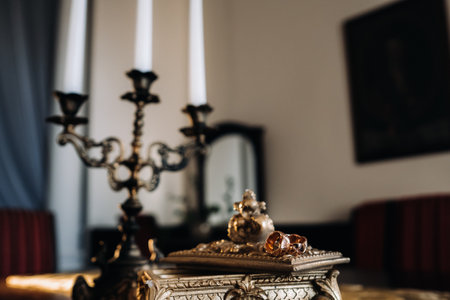Introduction: Navigating Feng Shui in British Homes
Feng Shui, an ancient Chinese practice rooted in the harmonious arrangement of space and energy, has found its way into the heart of many British homes. Arriving on British shores through a blend of cultural exchange and increasing interest in holistic living, Feng Shui’s principles have been both embraced and adapted to suit local tastes. However, as with any tradition transplanted into new soil, a host of misconceptions and myths have arisen along the way. The intersection of Feng Shui’s Eastern origins with Britain’s unique architectural styles and cultural nuances often leads to misunderstandings about what it truly means to “do” Feng Shui in a UK context. This article will explore how these myths have developed, why they persist, and how understanding the authentic principles behind Feng Shui can enrich life in British homes without falling for common pitfalls.
Myth: Feng Shui Is Only for the Superstitious
One of the most widespread misconceptions about Feng Shui in the UK is that it is merely a superstitious practice, reserved for those who believe in mysticism or ancient rituals. However, this perception overlooks the rich tapestry of cultural exchange and adaptation that has allowed Feng Shui to find practical relevance in modern British life. Rather than being confined to arcane traditions, Feng Shui principles have been embraced by many Britons seeking harmony and balance in their everyday environments.
The British approach to Feng Shui often blends traditional Chinese wisdom with pragmatic Western sensibilities. In the UK, individuals and families are increasingly adopting Feng Shui not as a matter of superstition, but as a tool for enhancing well-being, productivity, and comfort at home and in the workplace. This shift reflects a growing appreciation for holistic design philosophies that prioritise mental health and sustainability.
Feng Shui in Everyday British Life
| Misconception | Reality in the UK Context |
|---|---|
| Only for the superstitious | Used for practical purposes like improving home layout, promoting relaxation, and increasing workplace efficiency |
| Strict adherence to ancient rules | Adapted flexibly to suit modern British homes and lifestyles |
Cultural Integration and Modern Adaptation
In cities from London to Manchester, you will find interior designers, architects, and even estate agents who recognise the value of good spatial flow—a concept deeply rooted in Feng Shui. These professionals may not always use the language of “chi” or “Bagua maps”, yet their focus on natural light, decluttered spaces, and thoughtful arrangement echoes fundamental Feng Shui principles. Thus, what began as an imported tradition has gradually become interwoven with contemporary British values such as mindfulness and wellbeing.
The Practical Side of Feng Shui
Ultimately, understanding Feng Shui through a modern British lens means appreciating its potential to improve daily life without subscribing to superstition. Whether its choosing calming colours for a bedroom or optimising office desks for better concentration, these small changes demonstrate how Feng Shui can be both meaningful and practical—far removed from mere folklore or fanciful belief.
![]()
3. Myth: All Feng Shui Rules Are Universal
One of the most persistent misconceptions about Feng Shui is that its rules apply identically across the world, regardless of geography or culture. In truth, while certain core principles—such as balancing energy flow and creating harmonious spaces—remain central, their practical application can and should be tailored to suit local context. British homes, with their unique architectural heritage and distinct seasonal rhythms, offer a prime example. For instance, the traditional terraced houses common in the UK often feature narrow entrances and long corridors, which may not align perfectly with classical Feng Shui layouts designed for open-plan structures found elsewhere. Rather than rigidly imposing imported guidelines, a thoughtful approach involves adapting Feng Shui wisdom to enhance comfort, well-being, and functionality within British lifestyles. This could mean reinterpreting room placements, colour schemes, or even the direction of furniture to suit the natural light patterns typical of the UK’s changing skies. Ultimately, successful Feng Shui in Britain respects both tradition and innovation—dispelling the myth that there is a universal rulebook and encouraging homeowners to seek harmony by blending time-honoured principles with contemporary British living.
4. Myth: Feng Shui Dictates Drastic Home Changes
One of the most persistent myths about Feng Shui, particularly among UK homeowners, is that embracing this ancient practice requires expensive renovations or filling your home with unfamiliar, exotic artefacts. In truth, Feng Shuis core principles are flexible and can be seamlessly incorporated into a typical British household without any radical overhaul or financial strain.
Instead of tearing down walls or importing ornate statues, the essence of Feng Shui lies in subtle adjustments—often using what you already have at hand. For example, rearranging furniture to improve the flow of movement or increasing natural light can make a significant difference. Many classic British homes with their unique layouts and period features are actually well-suited to these gentle tweaks.
| Common Misconception | UK-Appropriate Approach |
|---|---|
| Knocking down walls for better energy flow | Simply repositioning furniture to open pathways |
| Buying expensive water features or exotic plants | Using local greenery like English ivy or lavender, and placing a small bowl of fresh water on a windowsill |
| Installing ornate Eastern decorations everywhere | Incorporating personal mementos or family heirlooms in meaningful spots |
| Purchasing imported talismans or charms | Using UK-sourced crystals, stones, or even favourite books as symbolic items |
The key is to respect your space and heritage while applying Feng Shui principles. Embrace what feels authentic to your British identity—be it a Victorian terrace in London or a cottage in the Cotswolds. Ultimately, effective Feng Shui does not demand dramatic changes but rather thoughtful enhancements that harmonise with your existing lifestyle and environment.
5. Myth: Feng Shui Conflicts with Modern British Design
One of the most persistent misconceptions about Feng Shui in the UK is that its principles inevitably clash with contemporary British interiors. This perception may stem from a belief that Feng Shui requires overtly traditional Chinese décor or an abundance of ornamental objects. However, when we look beyond surface appearances, it becomes clear that Feng Shui and modern British design can form a harmonious partnership, each enriching the other.
At its heart, Feng Shui is about promoting balance, flow, and a sense of wellbeing within a space—values that resonate deeply with current trends in British interior design. The minimalist movement, so popular in urban flats from London to Manchester, finds common ground with Feng Shui’s emphasis on decluttering and mindful arrangement. Rather than overwhelming a room with unnecessary items, both approaches advocate for thoughtful curation and purposeful use of space.
Moreover, the British appreciation for natural light, open-plan living, and connection to the outdoors aligns beautifully with key Feng Shui concepts such as maximising energy flow (Qi) and integrating nature into the home. Whether it’s through the strategic placement of mirrors to reflect daylight or the careful positioning of furniture to encourage smooth circulation, Feng Shui can subtly enhance even the most modern interiors without compromising their distinctive British character.
Importantly, adopting Feng Shui does not mean abandoning your personal style or filling your home with unfamiliar artefacts. Instead, it invites you to layer tradition into contemporary settings—perhaps by incorporating natural materials like wood or stone, opting for balanced colour palettes, or ensuring clear sightlines from one room to another. These small adjustments can have a significant impact on the mood and atmosphere of your home while remaining true to your taste.
Ultimately, rather than standing at odds, Feng Shui offers a toolkit for creating homes that are not only visually appealing but also supportive of health and happiness in everyday life. By embracing this blend of ancient wisdom and modern sensibility, British homeowners can craft spaces that feel both stylishly current and deeply nurturing.
6. Practical Tips: Embracing Feng Shui in the UK Context
Applying Feng Shui principles in British homes need not be daunting or culturally alien. In fact, many traditional British design sensibilities naturally align with Feng Shui’s focus on balance, harmony, and wellbeing. Here are some accessible and locally relevant suggestions for seamlessly incorporating Feng Shui into your living space:
Respecting the Character of British Homes
Whether you reside in a Victorian terrace, a Georgian townhouse, or a modern flat, embrace the architectural quirks and historic charm unique to your property. Rather than drastic changes, work with existing features—such as original fireplaces or bay windows—to encourage natural light and positive energy flow throughout the home.
Maximising Natural Light
The UK’s often overcast weather makes sunlight a cherished asset. Keep windows clean and uncluttered to welcome more daylight, and use mirrors strategically to reflect light into darker corners. This not only uplifts the mood but also aligns with Feng Shui’s emphasis on vitality and brightness.
Decluttering with Intention
Bespoke shelving and clever storage solutions common in British interiors are excellent tools for reducing clutter—a core principle of Feng Shui. Regularly donate unused items or repurpose old furniture to maintain clear pathways and open spaces that allow energy to circulate freely.
Bringing Nature Indoors
Houseplants such as English ivy, ferns, or peace lilies add a touch of greenery and improve air quality. Choose varieties suited to the UK climate and position them near windows or entrances to symbolise growth and renewal.
Choosing Colours Thoughtfully
Opt for hues that resonate with both your personal taste and Feng Shui’s elemental guidance. Soft blues and greens can evoke tranquility, while earth tones foster stability—perfect for creating restful lounges or welcoming entryways.
Honouring Local Traditions
Incorporate beloved British motifs—like floral patterns or heritage ceramics—as intentional decor elements. These familiar touches can be arranged according to Feng Shui principles: display meaningful objects in pairs for harmony or group items in odd numbers to encourage movement and vibrancy.
Ultimately, embracing Feng Shui in the UK is about thoughtful adaptation rather than rigid imitation. By integrating these practical tips into your daily life, you create a home environment that feels both authentically British and energetically balanced.
7. Conclusion: Cultivating a Balanced Space the British Way
In our exploration of common feng shui myths in the UK, it becomes clear that thoughtful interpretation is key. Rather than adopting every aspect of traditional feng shui without question, British homeowners can benefit more by mindfully adapting its principles to local culture, architecture, and lifestyle. The heart of feng shui is about creating harmony and balance within one’s environment—an idea that resonates across cultures, yet must be tailored to fit unique settings such as British homes with their distinct character and history. By challenging misconceptions and understanding the spirit behind feng shui, we empower ourselves to make choices that enhance comfort, functionality, and well-being. Whether it’s arranging furniture for better flow or introducing greenery for vitality, the goal should always be an authentic sense of balance. Ultimately, a truly harmonious British home comes from blending timeless wisdom with practical modern sensibilities—cultivating spaces that feel both meaningful and genuinely yours.


